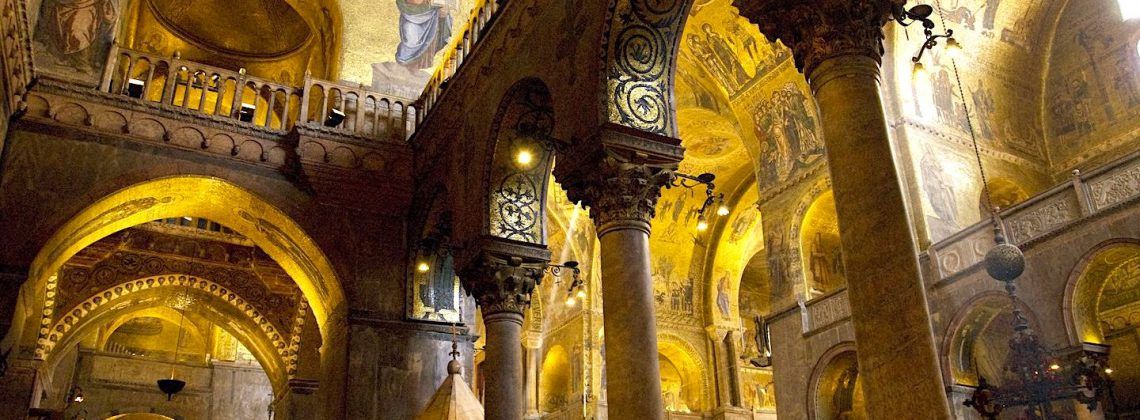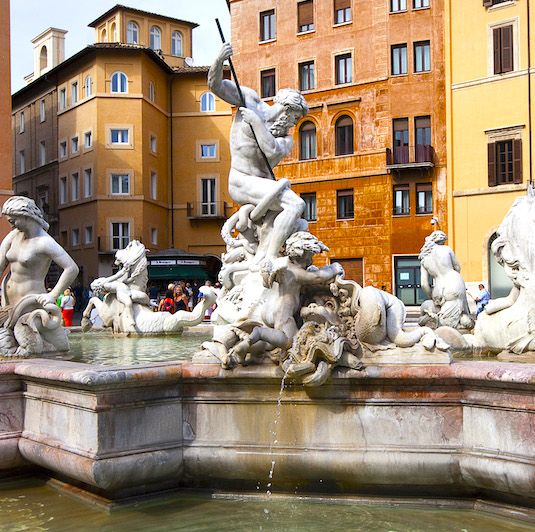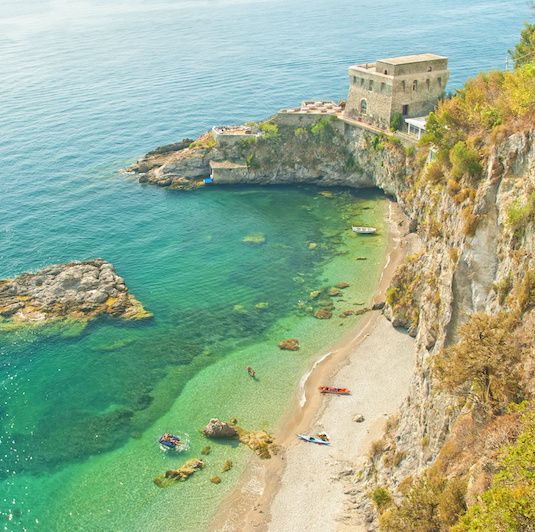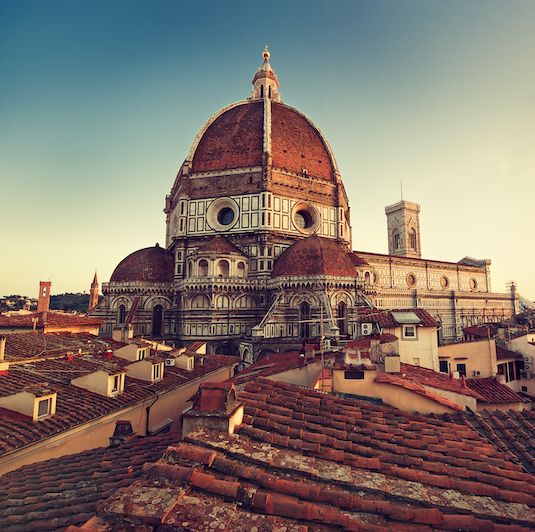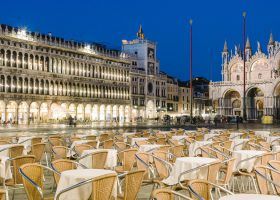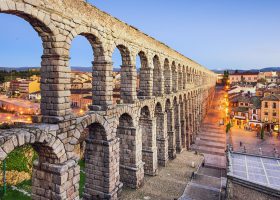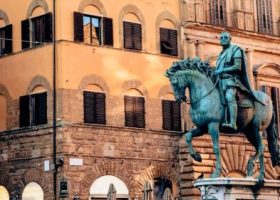St. Mark’s Basilica has been the main church in Venice for almost 1,000 years. As with anything that’s been around for hundreds of years, there are plenty of interesting and sometimes unbelievable facts about the place. Here are a few astounding facts about St. Mark’s Basilica in Venice.
Pro Tip: Planning what to do on your trip to Venice? Bookmark this post in your browser so you can easily find it when you’re in the city. See our comprehensive guide to Venice for more planning resources, our top St. Mark’s Basilica tours for a memorable trip, and how to see Venice in a day.
Astounding Facts About St. Mark’s Basilica
Legend has it that the first settlement of this lagoon took place after the fall of the Western Roman Empire ( A.D. 476). Once the Roman Empire fell, the Byzantine empire filled the vacuum in the ensuing centuries.
Since Venice is located on the Adriatic, it was much closer to the Byzantine realm of influence as opposed to Rome or other southern settlements. As a result, the architecture of the Doge’s Palace is byzantine and full of interesting stories!
11. It Was the Private Chapel of the Doge
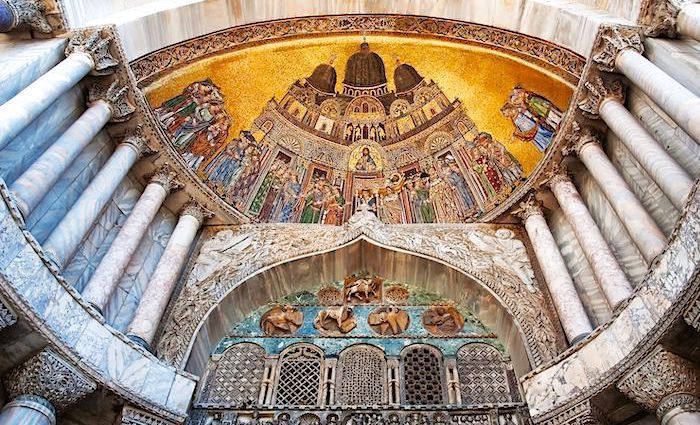
The Doge has always been a pretty powerful guy in Venice. Therefore it makes sense that the best church is the place where he went to pray. For 1,000 years, St. Mark’s Basilica was the “Doge’s church” in every aspect. Doges were elected here as well, further strengthening the bond.
Throughout the church’s history, major events and celebrations have always taken place inside. At the beginning of the 19th century, St. Mark’s became the cathedral of Venice and the Doge lost his primary grip over the church.
10. The Four Horses Were Taken from Constantinople

When you go into the church’s museum, you’ll see a quadriga or four horses made of bronze. These ancient statues were stolen from Constantinople and brought back to Venice as spoils of war. This is just one example of the many items taken from Constantinople during the fourth crusade.
You might be thinking, “Wait wasn’t Constantinople a Christian city? How could there be a crusade against them?” You’d be correct. The original intention was a holy war for the holy land. Things got complicated and the Doge wanted to exact revenge on Constantinople for an earlier offense. The rest is history.
Unforgettable Venice Tours
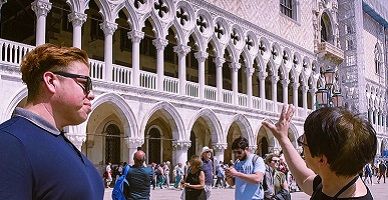
Best Selling Tour
St. Mark’s Basilica & Doge’s Palace Half-Day Tour with Gondola Ride
Get to know the best of Venice’s main attractions at St. Mark’s Square in just a few hours. You’ll have skip-the-line access at St. Mark’s Basilica. Then, head underground to the dungeons at the Doge’s Palace and cross the Bridge of Sighs.
See Prices
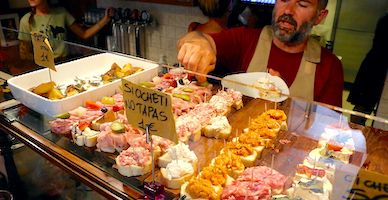
Authentic Experience
Venice Locals Evening Food Tour in Cannaregio
People who say Venice is too touristy have not done enough research. Cannaregio is an amazing break from the crowds, and our food tour is the most authentic way to experience it. Taste cicchetti and other Venetian specialties including wine. You’ll leave with a full stomach and a love for Venetian food!
See Prices
Not ready to book a tour? Check out our article on the best Venice tours to take and why.
9. The Church Has Eastern Roots
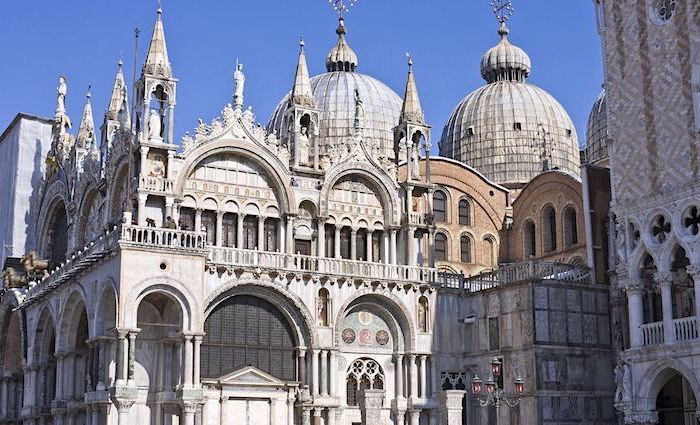
From the beginning, Venice had citizens who travelled the world. Their maritime culture introduced them to many other cultures that most Italians would not have seen. They were especially close with the Byzantine empire.
All of these factors explain why St. Mark’s Basilica doesn’t look like any typical church in the West. If you visit Istanbul (ancient Byzantium), you’ll notice that St. Mark’s more closely resembles the Hagia Sophia.
8. The Treasure of St Mark’s Has Gold—A Lot of It
The Treasure of St. Mark’s is a collection of precious objects and masterpieces kept inside the basilica throughout the centuries. For example, you’ll see ancient vases, amphorae, and enameled glasses covered in precious stones displayed throughout.
The collection has 283 pieces made from gold, silver, and other precious metals. As with many things in the church, most of the items were part of the treasure taken after the sacking of Constantinople.
7. The Pala d’Oro Is Astounding On Its Own
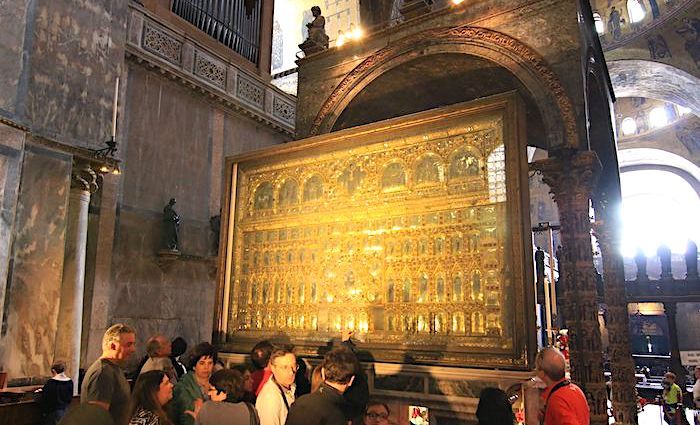
The Doge Ordelaffo Falier ordered the design in 1102 and received it in 1105. He wanted to create a screen to go over the high altar. Certainly, this is one of the main highlights of visiting the church.
The word Pala comes from the Latin word Palla for cloth. As a result, the church would at times decorate the images of saints with this cloth. Over time, they replaced it with gold or silver. This Byzantine altar screen of gold is studded with hundreds of gems—literally. They include 1,300 pearls, 300 emeralds, 300 sapphires, 400 garnets, 100 amethysts, plus rubies and topazes.
6. St. Mark Helped His Kidnappers
In the year 828, a group of men stole the remains of the body of St. Mark from Alexandria. Supposedly, they were able to get away with it by hiding them under a wagon of pork. The Muslim guard who inspected them didn’t want to have anything to do with the pork and let them pass.
As they were sailing back to Venice, a huge storm took hold of the boat. According to legend, the boat was about to sink when a vision of St. Mark appeared to them and told the captain to lower the sails. As a result, they avoided capsizing and made it safely to Venice.
5. The Church Was Originally For a Different Saint
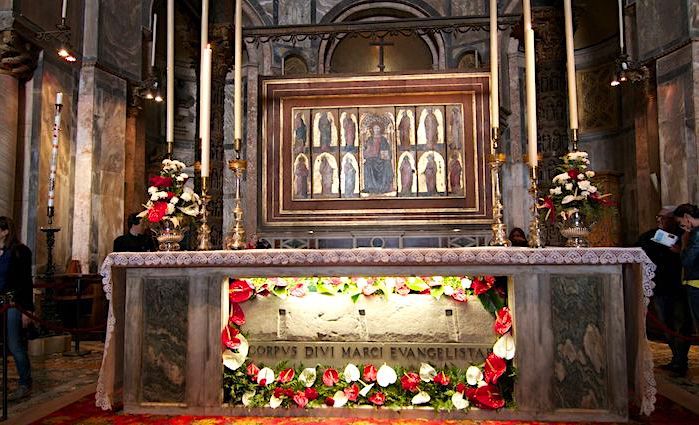
Originally, the patron saint of Venice was St. Theodore—a Greek saint. The Venetians built the church around 819 most likely from wood. Needless to say, the theft of the relics of St. Mark changed everything.
The Doge understood that the relics of such an important saint would bring streams of pilgrims, which in turn brought money. This is why the doge decided to change the patron saint to St. Mark. In the 11th century, they started construction on the church you see today.
4. There’s a Relief of the Virgin Mary with a Gun
Yes, that’s correct. My favorite astounding fact about St. Mark’s Basilica is this carved relief. In the left transept of the church, you can observe some interesting Romanesque-style relief sculptures.
One of them is a carving of the Madonna and child and there’s a votive offering of a rifle. The mystery remains of how it got there, but it goes to show how the Madonna has stayed up-to-date with the changes in the world.
3. The Church Has Over 500 Columns Inside
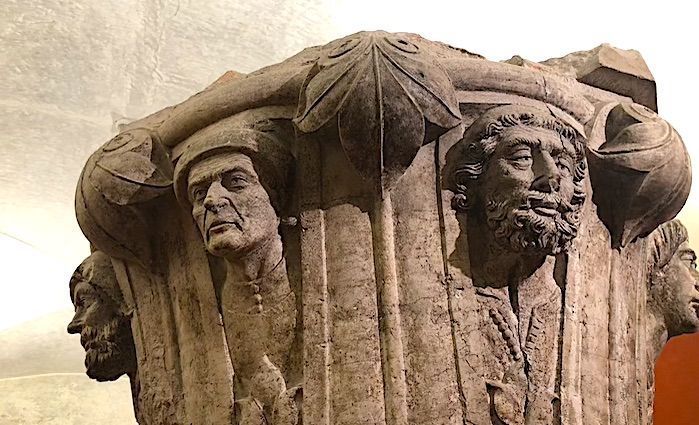
That’s not a typo. There are 500 columns and most of them date from between the 6th and the 11th centuries. As with most items, they are spoils of war from the conquest of Constantinople. Others are imitations from the Middle Ages.
Popular Venice Tours
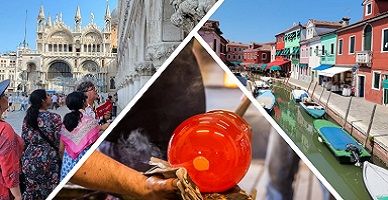
Best-Selling Tour
Ultimate Venice in a Day with Murano and Burano
The ultimate tour of Venice. You’ll get skip-the-line access to the most important buildings in Venice, plus a gondola ride, and private transportation to the islands of Murano and Burano. It’s a full day of touring that will make for the best memories in Venice ever.
See Prices
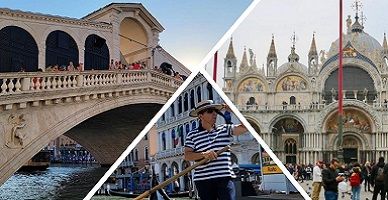
Top-Rated Tour
Venice in a Day Combo Tour with Gondola Ride
Only have a day in Venice and want to explore the best places? You’ll love this tour that includes skip-the-line access to St. Mark’s Basilica and the Doge’s Palace so you don’t waste time! Not to mention, you’ll wander through the Cannaregio district and learn about Rialto Bridge before floating through the canals on your own gondola.
See Prices
Not ready to book a tour? Check out our article on the best Venice tours to take and why.
2. The Oldest Tomb Is 1,000 Years Old
This honor goes to the Doge Vitale Falier who consecrated the basilica in 1096. Not far behind him is the tomb of Dogaressa Felicita Michiel whose piety was so strong she was honored with burial in the basilica as well.
Imagine how much that tomb has seen—if only it had a mouth to tell us all the cool stories! This is definitely one of my favorite facts about St. Mark’s Basilica.
1. There Are More Mosaics Than You Can Imagine
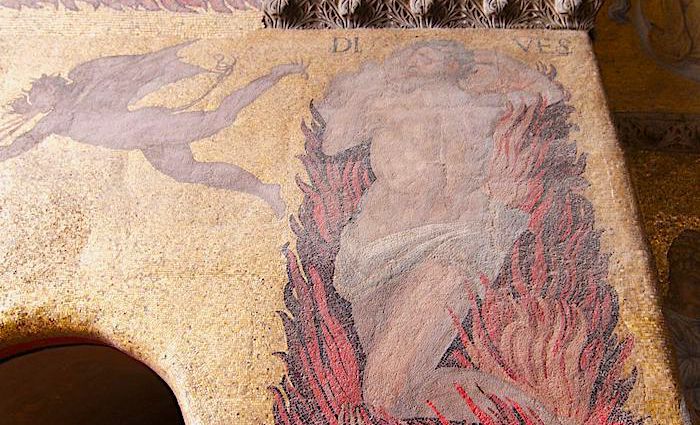
The most astounding fact of all is the over 85,000 square feet (8,000 square meters) of mosaics covering the interior of the basilica, including the five domes. You could spend hours just looking at the ceilings. Just to put that into perspective, the area covered by mosaics is the same size as Buckingham Palace!
The artwork tells stories from the Holy Bible, myths and local legends, episodes from the Virgin Mary and Jesus’ life, and most of all, St. Mark’s. The contrast between the bright ceilings and darker marble floors actually represents the contrast between life in heaven and life on earth. Ready to see St. Mark’s Basilica for yourself?
Not ready to book a tour? Check out our St. Mark’s Basilica Guide for more resources.
Here Is Where to Stay in the Most Popular Italian Destinations
Rome, Florence, Venice, the Amalfi Coast, and Capri
